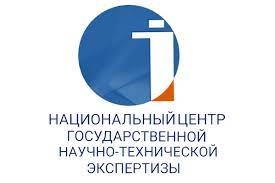CULTURAL AND COGNITIVE CHARACTERISTICS OF KAZAKH WORDS IN THE PROCESS OF COMPILING A LINGUOCULTURAL DICTIONARY
https://doi.org/10.55491/2411-6076-2025-3-163-173
Abstract
Linguoculturology is described as a complex scientific field that examines language in relation to national culture, historical consciousness, and ethnic worldview. The article defines the theoretical and methodological foundations of linguistic and foreign studies, analyzes the content and function of the concept based on the views of various scientists. During the research, lexical units reflecting the worldview of the Kazakh people were selected: related names, ethical positions, dastarkhan culture, national clothing names, linguistic data related to the place of birth and historical events, as well as units related to famous personalities, and their linguistic and cultural content was comprehensively considered. The methods of descriptive, structural-semantic and interpretative analysis are used as a methodological basis. The materials included in the dictionary are aimed at foreign language learners and are presented in an understandable and visual format that allows for a deeper explanation of the national identity, culture and ideological specifics of the Kazakh people. The information is complemented by visual and multimedia means (image, map, video, QR code) and is considered as a resource suitable for learning a language from a practical point of view. The research results are aimed at strengthening the intercultural aspect of teaching the Kazakh language, promoting national values and increasing their cultural and cognitive potential. The linguocultural dictionary developed on this basis will become a new type of educational tool, unique in Kazakh linguistics, providing students of the Kazakh language and foreign travelers with comprehensive information about the customs and traditions, national language, and spiritual culture of the Kazakh people.
Keywords
About the Authors
E. UtebayevaKazakhstan
Elmira Utebayeva, Candidate of Philological Sciences
Almaty
A. Nustayeva
Kazakhstan
Ardana Nustayeva, Master of Philology
Almaty
D. Sarsenbek
Kazakhstan
Dariya Sarsenbek, Master's Student
Almaty
References
1. Amіrbekova, A. (2011) Qazіrgі qazaq tіl bіlіmіndegі zhanga bagyttar. Almaty: Eltanym baspasy. 142 b. [Amirbekova, A. (2011) New Directions in modern Kazakh linguistics. Almaty: Eltanym publishing house. 142 p.] (in Kazakh)
2. Kenzheahmetuly, S. (1998) Ulttyq adet-guryptyng beimalіm 220 turі. Almaty: Sanat. 248 b. [Kenzheakhmetuly, S. (1998) 220 unknown types of national customs. Almaty: Sanat. 248 p.] (in Kazakh)
3. Otebaeva, Je.A., Isaeva, G.S., Serіkqyzy, M. (2023) Lingvomadeni іshkorpusty azіrleudegі madeni-semantikalyq belgіlenіm. Tiltanym. (3), 135-143. [Otebayeva, E.A., Issayeva, G.S., Serikkyzy, M. (2023) Cultural and semantic in the development of Linguocultural subcorpus. Tiltanym. No.3. P. 135-143. https://doi.org/10.55491/2411-6076-2023-3-135-143.] (in Kazakh)
4. Qazaq halqynyng ulttyq kiіmderі. (2011) Almaty: Almatykіtap baspasy. 384 b. [National costumes of the Kazakh people. (2011) Almaty: Almatykitap publ. house. 384 p.] (in Kazakh)
5. Qaidar, A. (2013) Qazaqtar ana tіlі alemіnde: jetnolingvistikalyq sozdіk (T 1. Adam. Almaty, 2009; T. 2. Qogam, T. 3. Tabigat. Almaty: Sardar. [Qaidar, A. (2013) Kazakhs in the world of native language: ethnolinguistic dictionary (T. 1. Human. Almaty, 2009; Vol. 2. Society, Vol. 3. Nature. Almaty: Sardar.] (in Kazakh)
6. Sapir, E. (1951) The status of Linguistics as a science. / Collected Writings. / Ed. By D. Mandelbaum. – Berkly: University of California Press. (in English)
7. Shherba, L.V. (1974) O trjoh leksikograficheskih rabotah. V kn..: Jazykovaja sistema i rechevaja dejatel`nost`. Leningrad: Nauka. S. 265-274. [Shcherba, L.V. (1974) On three lexicographical works. In: The language system and speech activity. Leningrad: Nauka. P. 265-274.] (in Russian)
8. Shherba, L.V. (2004) Jazykovaja sistema i rechevaja dejatel’nost’. Moskva: Editorial URSS. 432 s. [Shcherba L.V. (2004) Language system and speech activity. Moscow: Editorial URSS. 432 p.] (in Russian)
9. Talgatqyzy, G., Amirbekova, A., Fazylzhanova, A., Gabitkhanuly, K., Issayeva, G. (2024) Exploring the Semantic Significance ‘Camel’ and Cultural Representation in the Kazakh Ethnic Worldview as Reflected in the National Corpus. Forum for Linguistic Studies, 6(4). P. 268-276. https://doi.org/10.30564/fls.v6i4.6986. (in English)
10. Vereshhagin, E.M., Kostomarov, V.G. (1973) Jazyki i kul`tury: Lingostranovedenie v prepodavanii russkogo jazyka kak inostrannogo. Moskva: Russkij jazyk. 135 s. [Vereshhagin, E.M., Kostomarov, V.G. (1973) Languages and cultures: Linguistic and foreign studies in teaching Russian as a foreign language. Moscow: Russkij jazyk. 135 p.] (in Russian)
11. Vereshhagin, E.M. (1976) Jazyk i kul’tura. Moskva: Russkij jazyk. [Vereshchagin, E.M. (1976) Language and culture. Moscow: Russkij jazyk.] (in Russian)
12. Vinogradov, V.V. (1980) O jazyke hudozhestvennoj prozy. Izbrannye trudy. Moskva: Nauka. 359 s. [Vinogradov, V.V. (1980) About the language of fiction. Selected Works. Moscow: Nauka. 359 p.] (in Russian)
13. Zhumataeva, Z.N. (2007) Qazaq tіlіn turkіtіldі studentterge lingvoeltanym bagytynda oqytu adіstemesі: ped. gyl. kand. … dis. Almaty. 123 b. [Zhumatayeva, Z.N. (2007) Methods of teaching the Kazakh language to Turkic-speaking students in the direction of linguoeltanym: Ped. Science. Kand. … dis. Almaty. 123 p.] (in Kazakh)
14. https://ls.pushkininstitute.ru/lsslovar/?title=%D0%A2%D0%B5%D0%BC%D0%B0%D1%82%D0%B8%D1%87%D
Review
For citations:
Utebayeva E., Nustayeva A., Sarsenbek D. CULTURAL AND COGNITIVE CHARACTERISTICS OF KAZAKH WORDS IN THE PROCESS OF COMPILING A LINGUOCULTURAL DICTIONARY. Tiltanym. 2025;(3):163-173. (In Kazakh) https://doi.org/10.55491/2411-6076-2025-3-163-173

















